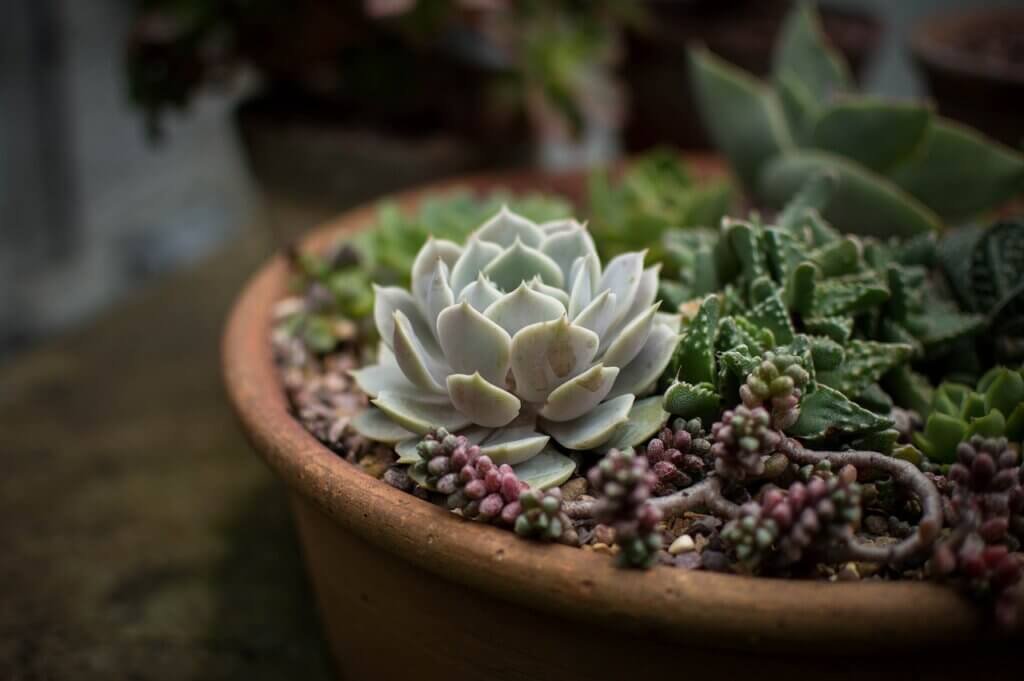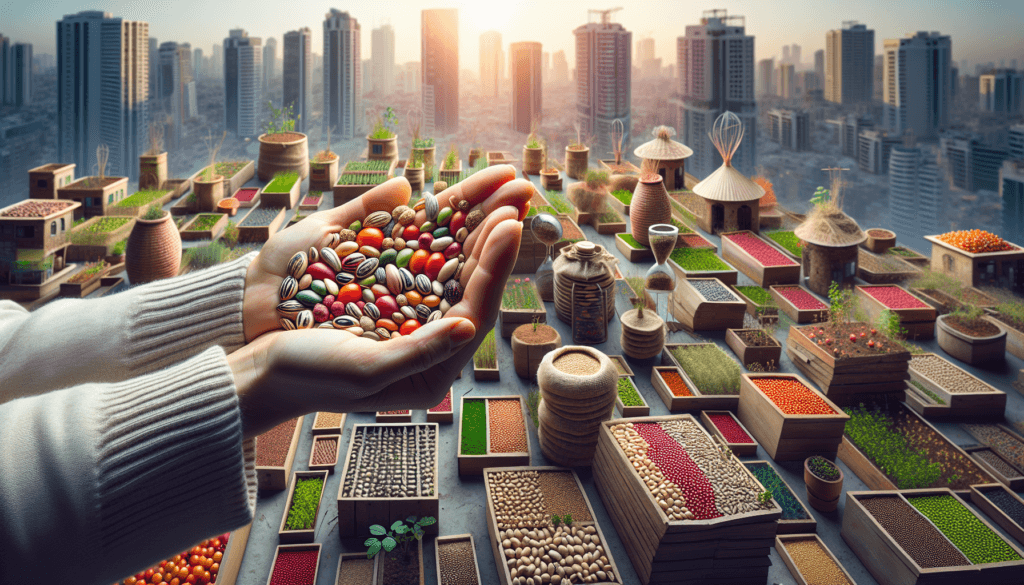Imagine living in a bustling city surrounded by towering skyscrapers and concrete streets, where the connection to nature seems like a distant memory. However, a growing movement is bringing the wonders of agriculture back into urban landscapes. Urban seed saving, a practice of preserving heirloom varieties, is gaining momentum as people recognize the importance of preserving our rich agricultural heritage. By making use of small garden spaces, balconies, and even unused rooftops, urban communities are fostering biodiversity and ensuring that these unique varieties of fruits and vegetables are not lost to time. Join the urban seed saving movement and discover the magic of reconnecting with nature, right in the heart of the city.
Importance of Seed Saving
Conservation of Biodiversity
Seed saving plays a crucial role in conserving biodiversity. By preserving and growing heirloom varieties, we ensure the survival of unique plant genetic material that may otherwise be lost. Biodiversity is essential for maintaining a healthy and resilient ecosystem, as it allows for natural adaptation and evolution in response to environmental changes.
Preservation of Local Flora
Seed saving in urban areas helps preserve the local flora and plant heritage. Urban environments often have distinct microclimates, which support the growth of specific plant species that have adapted to these conditions over time. By saving seeds from locally adapted plants, we contribute to the preservation and promotion of the unique flora of our cities.
Protection Against GMO Contamination
Saving seeds becomes increasingly important in the face of genetically modified organisms (GMOs) and the potential contamination they pose. By growing and saving heirloom varieties, you can ensure the purity and non-GMO status of your plants. Urban seed saving helps protect our food system from the risks associated with GMOs and promotes healthier, more sustainable agricultural practices.
Challenges of Seed Saving in Urban Areas
Limited Space
One of the main challenges of seed saving in urban areas is the limited space available for gardening. Urban dwellers often have small yards or no outdoor space at all. However, this obstacle can be overcome by utilizing smaller-scale gardening methods such as container gardening, vertical gardening, or participating in community garden projects.
Pollution and Contamination Risks
Urban environments may present higher levels of pollution and contamination risks, which can adversely affect seed saving efforts. Air pollution, soil contamination, and pesticide use in neighboring areas can all impact the quality of saved seeds. Implementing preventive measures such as using organic growing practices, selecting suitable planting sites, and regularly monitoring your plants can help mitigate these risks.
Legal and Policy Restrictions
Urban seed saving may also face legal and policy restrictions, especially regarding the cultivation and exchange of certain plant species, including those listed as invasive or restricted by local regulations. Familiarizing yourself with the laws and regulations in your area and engaging in dialogue with local authorities will help navigate these challenges and advocate for more seed-friendly policies.

Benefits of Urban Seed Saving
Resilient and Adaptable Seeds
Seeds saved from heirloom varieties that have grown in urban environments for generations are inherently resilient and adaptable. These plants have already proven their ability to thrive in urban conditions, making them better suited to local climates, pests, and diseases. By saving and replanting these seeds, you contribute to the development of more resilient urban agricultural systems.
Enhanced Food Security
Urban seed saving enhances food security by promoting local food production. The ability to produce your own food by saving seeds reduces dependence on commercial seed sources, providing a more sustainable and reliable supply of fresh produce. In times of crisis or disruptions in the food system, having a diverse and locally adapted seed bank becomes critical for ensuring food security in urban areas.
Community Engagement and Education
Urban seed saving brings communities together through shared gardening experiences and the exchange of knowledge. By participating in seed saving initiatives, you can engage with neighbors, community organizations, and educational institutions to educate and inspire others about the importance of seed preservation and sustainable urban agriculture. This promotes a sense of community pride, self-sufficiency, and fosters a deeper connection with nature.
How to Save Seeds in Urban Areas
Selecting and Growing Heirloom Varieties
When saving seeds in urban areas, it is important to select and grow heirloom varieties. Heirlooms are open-pollinated plants whose seeds can be reliably saved and grown true to type. Choose plant varieties that are adapted to your specific urban growing conditions, such as drought-tolerant varieties or those suitable for container gardening. Keep in mind factors such as available space, sunlight, and soil quality.
Isolation Techniques to Prevent Cross-pollination
Preventing cross-pollination is crucial when saving seeds in urban areas, especially if you want to preserve the genetic purity of a particular variety. This can be achieved through techniques such as hand pollination, using physical barriers like mesh bags or cages, or timing the planting of different varieties to prevent overlap in flowering times. Familiarize yourself with the pollination tendencies of the plants you are saving seeds from to implement the appropriate isolation techniques.
Harvesting and Cleaning Seeds
The process of saving seeds involves proper harvesting and cleaning to ensure the viability and longevity of the seeds. Allow the plants to fully mature and dry on the vine or branch before collecting the seeds. Once harvested, remove any debris or unwanted material from the seeds through winnowing, sieving, or gentle washing and drying. Properly storing cleaned seeds in a cool, dry, and dark place will help maintain their quality and improve their chances of successful germination in future seasons.

Important Considerations for Urban Seed Saving
Seed Viability and Longevity
When selecting seeds for saving, it is crucial to consider their viability and longevity. Some seeds have a longer lifespan than others, and their ability to germinate may decrease over time. Understanding the specific requirements and characteristics of each variety will help you determine the best storage conditions and determine seed viability. Regularly testing seed germination rates is recommended to ensure the quality and vitality of your saved seeds.
Storage and Preservation Methods
Proper storage and preservation methods are essential for maintaining seed viability. Seeds should ideally be stored in airtight containers or seed envelopes to protect them from moisture, pests, and exposure to light. Keeping seeds in a cool and dark location, such as a refrigerator or a cool basement, can enhance their longevity. Additionally, periodically checking stored seeds for signs of deterioration and replacing them with fresh seeds will help maintain a reliable seed bank.
Record-keeping and Labeling
Maintaining accurate records and labels for saved seeds is vital for organization and future reference. Record the variety, planting dates, and any specific growing conditions or observations. Proper labeling ensures that you can easily identify and distinguish different seed varieties, avoiding confusion and preserving the integrity of your seed collection. Consider using water-resistant or archival-quality labels and storing the information digitally as a backup.
Supporting Organizations and Resources
Seed Libraries and Exchanges
Seed libraries and exchanges are valuable resources for urban seed savers. These community-based organizations allow individuals to borrow, exchange, and contribute seeds, fostering seed diversity and community resilience. Check if there are any seed libraries in your area and explore the possibility of participating in seed exchange events or becoming a member of a seed-saving community.
Urban Gardens and Community Farms
Urban gardens and community farms often have experienced gardeners who are passionate about seed saving. Engaging with these organizations provides opportunities to learn from experienced practitioners and gain hands-on experience in seed saving. Many urban gardens offer workshops, seminars, or mentorship programs specifically tailored to seed-saving techniques in urban environments.
Online Platforms and Networks
The internet provides a wealth of information and resources for urban seed savers. Online platforms, forums, and social media groups dedicated to sustainable gardening and seed saving connect individuals with a broader network of like-minded individuals from around the world. These platforms provide valuable guidance, troubleshooting advice, and access to a wide range of seed varieties and sources.

Urban Seed Saving Success Stories
Detroit Seed Library
The Detroit Seed Library is a prime example of a successful urban seed saving initiative. It began as a small community project and has grown into a vibrant network of gardeners and seed enthusiasts. The library offers free seed exchange, educational workshops, and resources on seed saving techniques tailored to urban gardening. It has become a catalyst for community building, empowering Detroit residents to take control of their food sources.
Chicago’s Peterson Garden Project
The Peterson Garden Project in Chicago is another inspiring urban seed saving success story. This initiative transforms vacant city lots into productive community gardens, where residents come together to grow their own food and save seeds. The project offers hands-on gardening classes, seed swaps, and educational programs, making seed saving accessible and engaging for people of all ages and backgrounds.
Portland Seed Exchange
The Portland Seed Exchange in Oregon is renowned for its dedication to preserving heirloom varieties. It provides a platform for local gardeners to share and exchange locally adapted seeds, fostering a sense of community and promoting sustainable urban agriculture. The exchange also hosts educational events and seed-saving workshops to empower individuals and spread knowledge on seed saving throughout the city.
Policy and Advocacy for Urban Seed Saving
Importance of Seed Sovereignty
Seed sovereignty is the right of individuals and communities to control and manage their own seed resources. Advocating for seed sovereignty in urban areas is crucial for preserving heirloom varieties, ensuring food security, and maintaining cultural and ecological diversity. By supporting policies that protect seed-saving rights and promoting local control over seed resources, we can build a more resilient and sustainable urban food system.
Urban Agricultural Zoning Laws
Advocacy for urban seed saving involves engaging with local governments to shape urban agricultural zoning laws and regulations. These laws should support and encourage practices such as gardening, seed saving, and community-driven food production. Collaborating with policymakers, attending public hearings, and raising awareness about the benefits and importance of urban seed saving can help foster a supportive legal framework.
Collaboration with Local Government
Collaboration with local government is essential for supporting and expanding urban seed saving initiatives. By actively engaging with government officials and agencies responsible for urban planning, environmental stewardship, and community development, seed savers can gain access to resources, funding, and land for community gardens or seed-saving projects. Building strong partnerships with local government entities can establish a foundation for long-term sustainability and growth of urban seed saving.

Challenges and Opportunities for Scaling Urban Seed Saving
Collaborative Initiatives and Networks
Scaling urban seed saving requires collaboration between individuals, organizations, and communities. By forming collaborations and networks, seed savers can pool resources, knowledge, and expertise. Working together allows for the exchange of diverse seed varieties, sharing of successful seed-saving techniques, and collective advocacy for policy reforms that support urban seed saving.
Access and Affordability of Seeds
For urban seed saving to thrive, access to a diverse range of seeds is essential. Many communities face limited access to affordable seeds, especially heirloom varieties. Collaborating with seed libraries, community gardens, and seed exchanges can help address this challenge by sharing seeds and cultivating a local seed economy. Additionally, advocating for the affordability and availability of heirloom seeds in local nurseries and seed catalogs can make them more accessible to urban gardeners.
Integration in Urban Planning
Integrating urban seed saving into local urban planning initiatives provides an opportunity to create space and resources for seed-saving activities. Incorporating community gardens, seed libraries, and educational programs into urban development plans can ensure that seed-saving practices are incorporated into the fabric of the city. By recognizing the value of urban agriculture and seed saving, cities can foster a sustainable, resilient, and food-secure future for their residents.
Tips for Beginners in Urban Seed Saving
Start Small and Experiment
If you are new to urban seed saving, start by selecting a few plant varieties that are well-suited to your climate and growing conditions. Experiment with different seed-saving techniques and learn from experienced gardeners in your community. Starting small allows you to develop your skills and confidence before expanding your seed-saving endeavors.
Join Local Seed Saving Groups
Joining local seed saving groups or becoming a member of a community garden provides opportunities to connect with experienced seed savers and gain valuable insights. These groups often organize workshops, plant swaps, and seed-saving demonstrations that can help you learn the intricacies of seed saving in an urban setting. Collaborating with others who share your passion for seed preservation creates a supportive network and fosters a sense of community.
Learn from Experienced Gardeners
Experienced gardeners have a wealth of knowledge and practical advice to share. Seek out mentorship or engage in conversations with seasoned growers to learn from their experiences and gain insights into successful seed saving techniques in urban areas. Their guidance can help you overcome challenges, avoid common pitfalls, and refine your seed-saving skills.
In conclusion, urban seed saving is a vital practice that preserves heirloom varieties, supports biodiversity conservation, and enhances food security in urban areas. Despite the challenges of limited space, pollution risks, and legal restrictions, the benefits of urban seed saving, including resilience, community engagement, and education, are considerable. By selecting heirloom varieties, implementing isolation techniques, and following proper harvesting and cleaning methods, urban gardeners can contribute to the preservation of our plant heritage. It is essential to consider seed viability, storage methods, and record-keeping to ensure a reliable seed bank. Supporting organizations such as seed libraries, urban gardens, and online platforms provide valuable resources and networking opportunities for urban seed savers. Successful initiatives like the Detroit Seed Library, Chicago’s Peterson Garden Project, and the Portland Seed Exchange serve as inspirations for urban seed savers. Policy and advocacy efforts for seed sovereignty, urban agricultural zoning laws, and collaboration with local government are crucial for scaling urban seed saving. Overcoming challenges and seizing opportunities require collaborative initiatives, improving the accessibility and affordability of seeds, and integrating seed saving into urban planning. For beginners in urban seed saving, it is recommended to start small, join local seed saving groups, and learn from experienced gardeners. By embracing urban seed saving, you contribute to a more resilient, sustainable, and self-sufficient urban food system.



